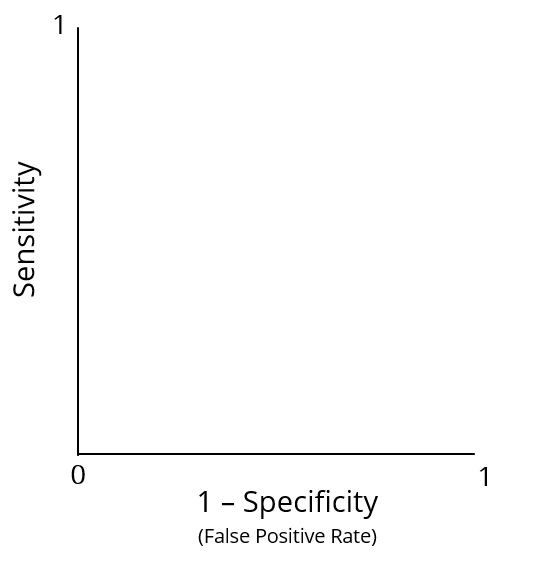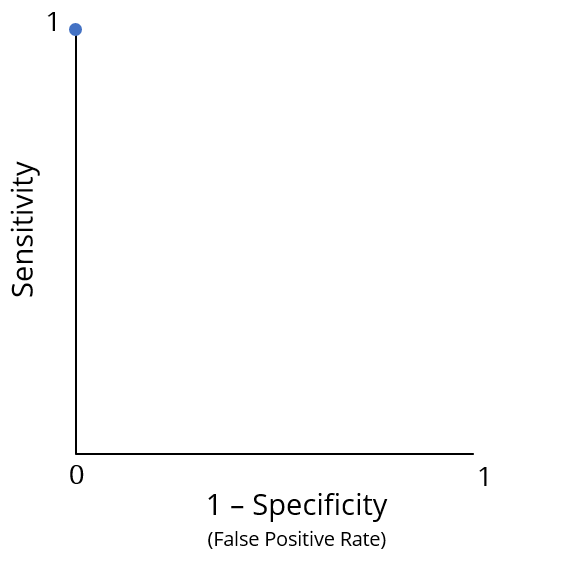Visualizing model performance
Modeling with tidymodels in R

David Svancer
Data Scientist
Plotting the confusion matrix
Heatmap with autoplot()
- Pass confusion matrix object into
autoplot() - Set
typeto'heatmap' - Visualize the most prevalent counts
conf_mat(leads_results, truth = purchased, estimate = .pred_class) %>%autoplot(type = 'heatmap')
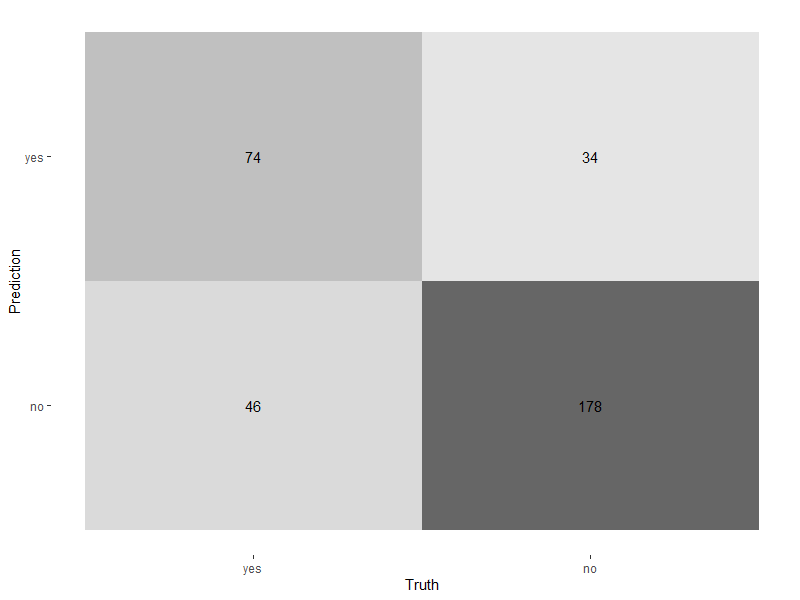
Mosaic plot
Mosaic with autoplot()
- Set
typeto'mosaic' - Each vertical bar represents 100% of actual outcome value in column
- Visually displays
- sensitivity
conf_mat(leads_results,
truth = purchased,
estimate = .pred_class) %>%
autoplot(type = 'mosaic')
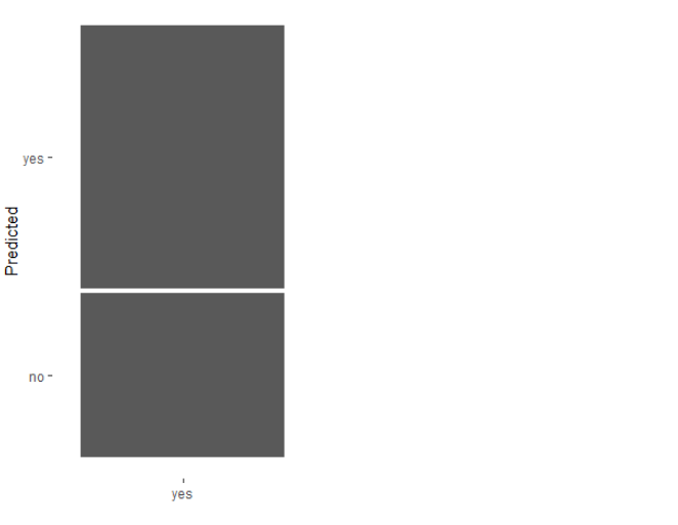
Mosiac plot
Mosaic with autoplot()
- Set
typeto'mosaic' - Each vertical bar represents 100% of actual outcome value in column
- Visually displays
- sensitivity
- specificity
conf_mat(leads_results,
truth = purchased,
estimate = .pred_class) %>%
autoplot(type = 'mosaic')
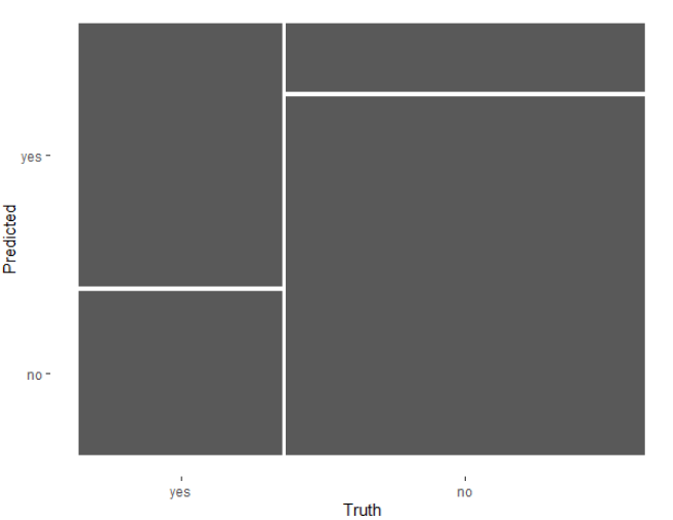
Probability thresholds
Default probability threshold in binary classification is 0.5
- If the estimated probability of the positive class is greater than or equal to 0.5, the positive class is predicted
leads_results
- If
.pred_yesis greater than or equal to 0.5 then.pred_classis set to 'yes' by thepredict()function intidymodels
leads_results
# A tibble: 332 x 4
purchased .pred_class .pred_yes .pred_no
<fct> <fct> <dbl> <dbl>
1 no no 0.134 0.866
2 yes yes 0.729 0.271
3 no no 0.133 0.867
4 no no 0.0916 0.908
5 yes yes 0.598 0.402
6 no no 0.128 0.872
7 yes no 0.112 0.888
8 no no 0.169 0.831
9 no no 0.158 0.842
10 yes yes 0.520 0.480
# ... with 322 more rows
Exploring performance across thresholds
How does a classification model perform across a range of thresholds?
- Unique probability thresholds in the
.pred_yescolumn of the test dataset results- Calculate specificity and sensitivity for each
| threshold | specificity | sensitivity |
|---|---|---|
| 0 | 0 | 1 |
| 0.11 | 0.01 | 0.98 |
| 0.15 | 0.05 | 0.97 |
| ... | ... | ... |
| 0.84 | 0.89 | 0.08 |
| 0.87 | 0.94 | 0.02 |
| 0.91 | 0.99 | 0 |
| 1 | 1 | 0 |
Visualizing performance across thresholds
Receiver operating characteristic (ROC) curve
- Used to visualize performance across probability thresholds
- Sensitivity vs. (1 - specificity) across unique thresholds in test set results
Visualizing performance across thresholds
Receiver operating characteristic (ROC) curve
- Used to visualize performance across probability thresholds
- Sensitivity vs (1 - specificity) across unique thresholds in test set results
- Proportion correct among actual positives vs. proportion incorrect among actual negatives
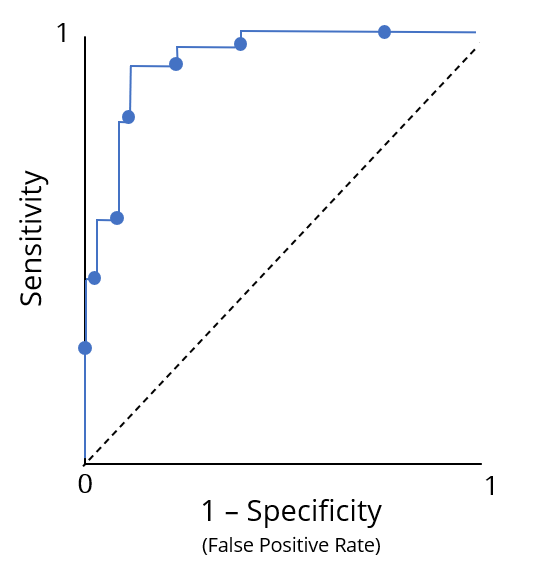
ROC curves
Optimal performance is at the point (0, 1)
- Ideally, a classification model produces points close to left upper edge across all thresholds
ROC curves
Optimal performance is at the point (0, 1)
- Ideally, a classification model produces points close to left upper edge across all thresholds
Poor performance
- Sensitivity and (1 - specificity) are equal across all thresholds
- Corresponds to a classification model that predicts outcomes based on the result of randomly flipping a fair coin
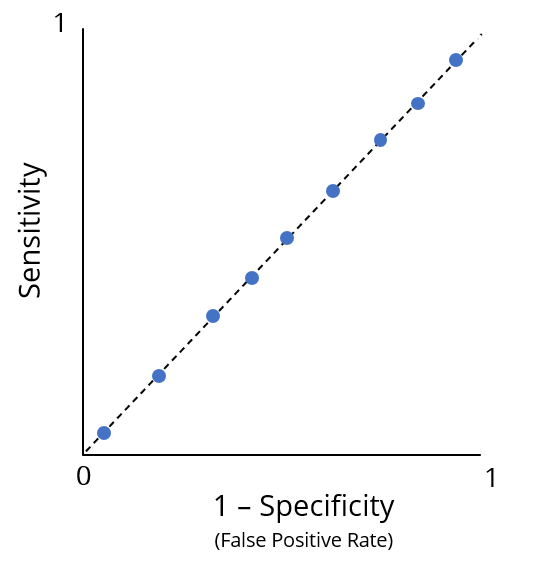
Summarizing the ROC curve
The area under the ROC curve (ROC AUC) captures the ROC curve information of a classification model in a single number
Useful interpretation as a letter grade of classification performance
- A - [0.9, 1]
- B - [0.8, 0.9)
- C - [0.7, 0.8)
- D - [0.6, 0.7)
- F - [0.5, 0.6)
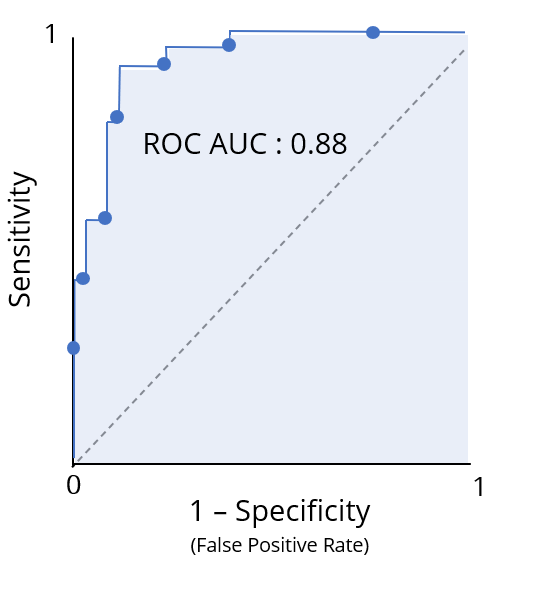
Calculating performance across thresholds
The roc_curve() function
- Takes a results tibble as the first argument
truthcolumn with true outcome categories- Column with estimated probabilities for the positive class
.pred_yesinleads_resultstibble
- Returns a tibble with specificity and sensitivity for all unique thresholds in
.pred_yes
leads_results %>%
roc_curve(truth = purchased, .pred_yes)
# A tibble: 331 x 3
.threshold specificity sensitivity
<dbl> <dbl> <dbl>
1 -Inf 0 1
2 0.0871 0 1
3 0.0888 0.00472 1
4 0.0893 0.00943 1
5 0.0896 0.0142 1
6 0.0902 0.0142 0.992
7 0.0916 0.0142 0.983
8 0.0944 0.0189 0.983
# ... with 323 more rows
Plotting the ROC curve
Passing the results of roc_curve() to the autoplot() function returns an ROC curve plot
leads_results %>%
roc_curve(truth = purchased, .pred_yes) %>%
autoplot()
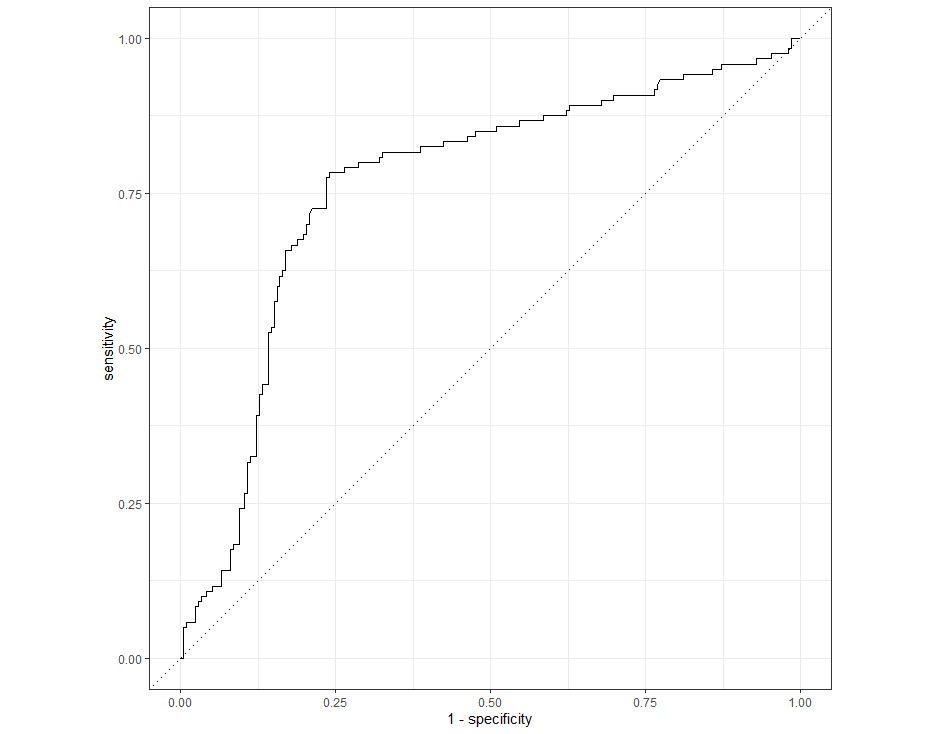
Calculating ROC AUC
The roc_auc() function from yardstick will calculate the ROC AUC
- Tibble of model results
truthcolumn- Column with estimated probabilities for the positive class
roc_auc(leads_results,
truth = purchased,
.pred_yes)
# A tibble: 1 x 3
.metric .estimator .estimate
<chr> <chr> <dbl>
1 roc_auc binary 0.763
Let's practice!
Modeling with tidymodels in R
